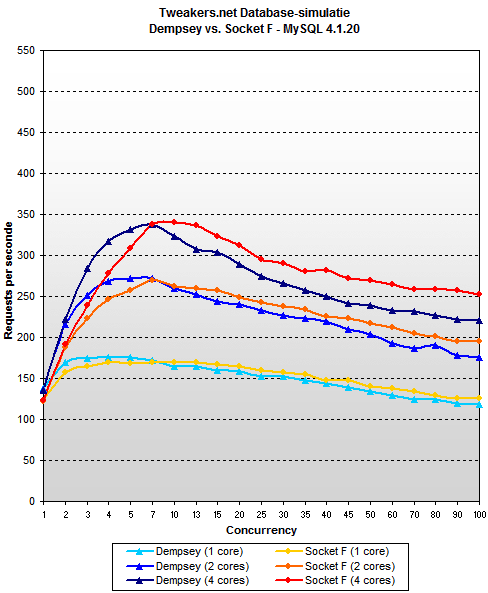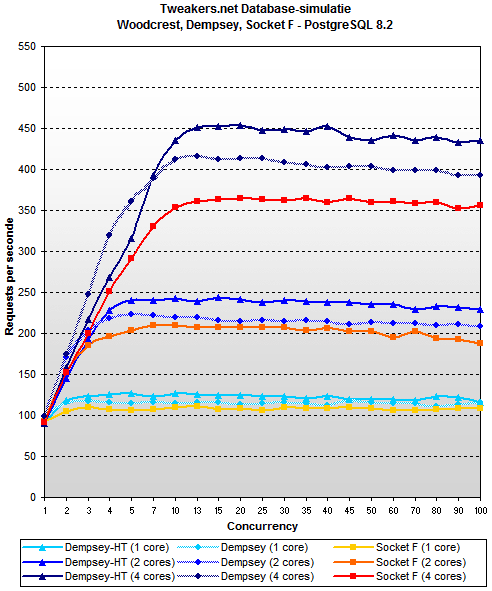The first thing we want to examine is how the Xeon Dempsey performs compared to the Opteron. After all, this enables us to see how the old Netburst-architecture, armed with a good chipset, fares against the competition. As it turns out, not very well: under heavy load, de 2.4GHz Opteron is on average 12% faster than the 3.73GHz Demspey in MySQL 4.1.20. In MySQL 5.0.20a, the difference is somewhat smaller but 9% is still a clear win for AMD. Still, the advantage of the Opteron is not as great as it was at the beginning of this year, when the old Xeon 'Paxville', in conjunction with the Lindenhurst chipset was the Opteron's sole competitor. The almost tripled bandwidth that comes with Blackford apparently makes up quite a bit even without Woodcrest. It may not yet be a victory for Intel but at least there is less reason for red faces in Santa Clara.


In PostgreSQL Dempsey achieves a substantial victory against the Opteron. The reason, besides the 1.3GHz faster clock speed, appears to be good use of HyperThreading: with a core each, the servers put down similar performances but moving to two and four cores sees the Xeon gain more ground than the Opteron. In the end the Intel system outperforms the AMD-setup by 22%.

All in all, Dempsey does reasonably well, but it has to be taken into consideration that this is a test between the quickest Dempsey and a subtop Opteron, where AMD could have fared somewhat better with 4GB of extra memory. Intel's new chipset puts an end to the embarrassing backlog that was apparent at the start of this year, but the combination with the Netburst-Xeon does not yet make for a persuasive lead.

:fill(white):strip_exif()/i/2000831982.jpeg?f=thumbmedium)
:fill(white):strip_exif()/i/2000831636.jpeg?f=thumbmedium)
:fill(white):strip_exif()/i/2000831669.jpeg?f=thumbmedium)